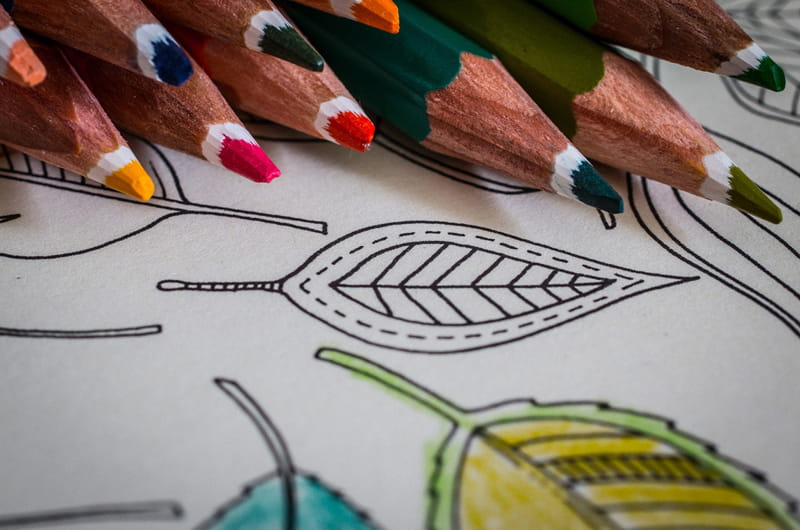Drexel Study: Coloring Books Make You Feel Better, But Real Art Therapy Much More Potent
 By Frank Otto
By Frank Otto

- Drexel Selects New, World-Class Life Sciences Building at 3201 Cuthbert Street for Medical Research Operations
- Breakthrough on Gene Therapy for Hereditary Spastic Paraplegia
- Drexel Environmental Collaboratory Releases Cross-Sector Findings on Severe Weather Recovery Challenges
- Student Sketches Bring Drexel’s Historic Objects to Life

A new study shows that while those adult coloring books can reduce stress, they’re still not art therapy.
Often, the now-ubiquitous adult coloring books will advertise themselves as “art therapy.” But actual art therapists contend that such a claim is misleading, that true art therapy is about growth and relationships and not simply about “feeling better.”
In light of that, Girija Kaimal, EdD, assistant professor in Drexel University’s College of Nursing and Health Professions led a study that shows that while coloring alone does have some positive effect, it is not nearly as potent as involving an art therapist.
“The main takeaway is that coloring has some limited benefits like reducing stress and negative mental states,” Kaimal said. “But it does not shift anything else of substance, develop relationships, nor result in any personal development.”

Kaimal and her Canadian Art Therapy Association Journal study co-authors — Janell Mensinger, PhD, associate research professor in Drexel’s Dornsife School of Public Health, and doctoral students Jessica Drass and Rebekka Dieterich-Hartwell — ran two, separate 40-minute exercises, one consisting of pure coloring and the other involving direct input from an art therapist, to see if one or the other led to significant differences in mood and stress levels.
“The art therapists’ open studio sessions resulted in more empowerment, creativity and improved mood, which are significant for individuals striving to improve their quality of life and make lasting change,” Kaimal said.
Every participant — of which there were 29, ranging in age from 19 to 67 — took part in each exercise. In the pure coloring exercise, the participants colored in a pattern or design. Although an art therapist was in the room, they did not interact with the person coloring.
In the other exercise, participants were put in an “open studio” situation, where an art therapist was present and able to facilitate the session, as well as provide guidance and support to process the experience and artwork. The participants were able to make any type of art they wished, whether it involved coloring, sketching, doodling, or working with modeling clay. As the participants worked on their piece, the art therapists created art as well, and were available to assist the participants if they asked for it.

Each person took standardized surveys before and after their sessions that ranked their stress levels and feelings.
Perceived stress levels went down by roughly the same levels for both exercises (10 percent for coloring; 14 percent for open studio). Negative mental states also showed similar decreases in levels (roughly a 7 percent decrease for coloring; 6 percent for open studio).
But while the coloring exercise didn’t show significant changes for any other effects, the participants displayed an approximate 7 percent increase in self-efficacy, 4 percent increase in creative agency, and a 25 percent increase in positive feelings after their art therapist-aided open studio sessions.
“Many of the outcomes were enabled through the relational support from the art therapist,” Kaimal explained. “The art therapist-facilitated session involves more interpersonal interaction, problem solving around creative choices and expression, empowerment and perhaps more learning about the self and others. That all contributes to the outcomes we saw.”
So while coloring did help alleviate bad feelings, it didn’t create good feelings in the way that actual art therapy might.
“Coloring might allow for some reduction in distress or negativity, but since it is a structured task, it might not allow for further creative expression, discovery and exploration which we think is associated with the positive mood improvements we saw in the open studio condition,” Kaimal said.
Read the full study, “Art Therapist-Facilitated Open Studio Versus Coloring: Differences in Outcomes of Affect, Stress, Creative Agency and Self-Efficacy” here.
Drexel News is produced by
University Marketing and Communications.